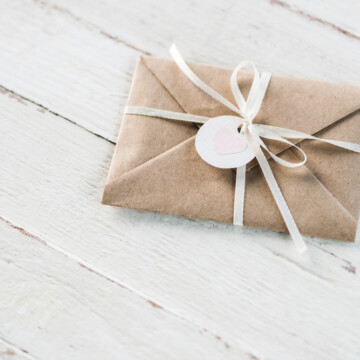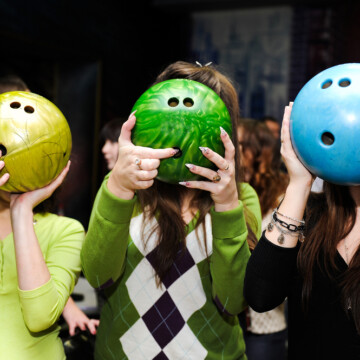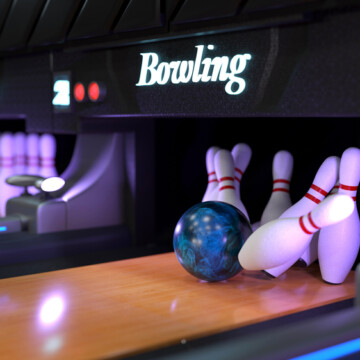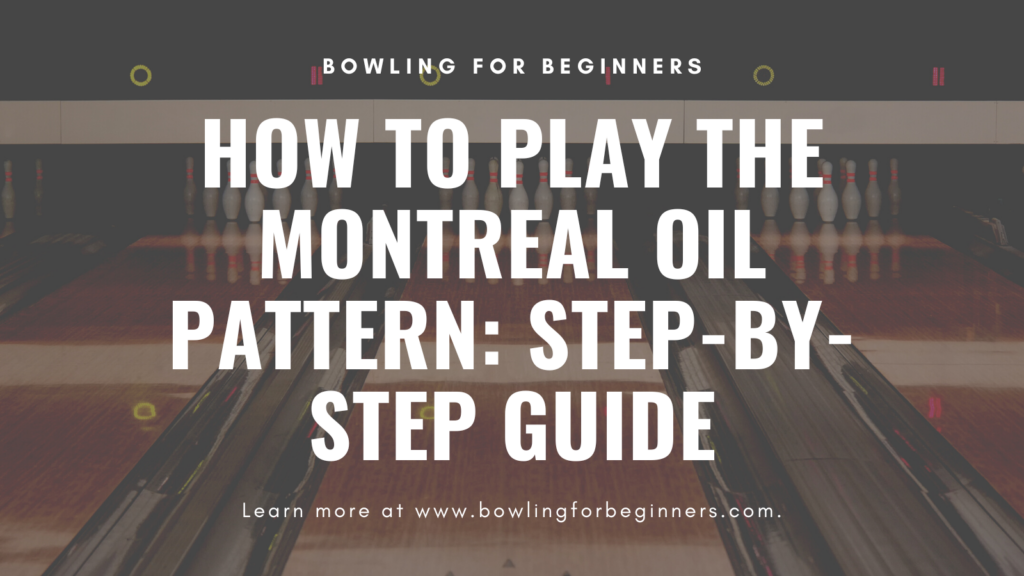
Bowling lane oil patterns profoundly affect your gameplay, as they directly affect the trajectory and behavior of your ball. For this reason, every new bowler should become familiar with the concept of oil patterns.
Today, we're going to spotlight the Montreal oil pattern, and we'll explain everything you need to know about it. Let's get right into it!
Contents
What Is the Montreal Oil Pattern?
The Montreal oil pattern is among the collection of patterns designed by the World Tenpin Bowling Association (WTB). The WTB designed a series of patterns for international bowling competitions to ensure their integrity. Each pattern in the series was named after Olympic host cities since a primary focus of the WTB was getting bowling into the Games.
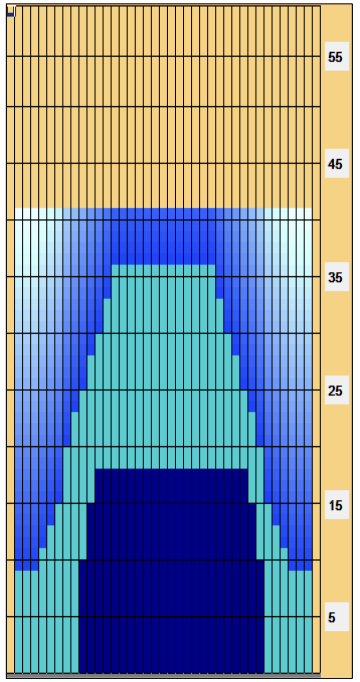
The Montreal oil pattern is a medium-length pattern with a total oil volume of about 25 ml - which can be considered medium volume. Most of the oil (21 ml) is applied as forward oil, and about 4 ml is used on the reverse pass. As you may have guessed, the oil’s application direction affects how the pattern plays.
At the start of the lane, some combined oil (forward and reverse oil) is situated in the middle, but it doesn't extend all the way to the gutter. It goes from the foul line to the 17-foot mark. The forward oil extends from the sides of the foul line and tapers in until the 36-foot mark.
| Feature | Detail |
|---|---|
| Pattern Name | Montreal Oil Pattern |
| Designed by | World Tenpin Bowling Association (WTBA) |
| Length | Medium-length |
| Total Oil Volume | About 25 ml (medium volume) |
| Forward Oil Volume | 21 ml |
| Reverse Oil Volume | 4 ml |
| Pattern Complexity | Considered difficult due to technical specifications |
| Primary Challenge | Requires precise adjustments, keen observation |
| Ideal for | Avid and pro bowlers seeking to improve skills |
| Ball Type Recommendations | Reactive coverstock (pearl or solid), Urethane balls |
| Playing Strategy | Direct approach, use of Rule of 31 for ball trajectory |
Note: There are slight variations in the volume and placement of oil from one version of the Montreal pattern to another. This same phenomenon occurs with other oil patterns but is much more apparent with the Montreal pattern than some of the others.
Key Takeaways
- The Montreal oil pattern, designed by the World Tenpin Bowling Association, is a medium-length and volume pattern, challenging due to its technical specifications and requiring precise adjustments for bowlers.
- This pattern allows for a play style similar to a house shot for experienced players, though it demands strategic adaptations and may not significantly boost scores due to its complexity.
- The key to success in the Montreal pattern is understanding the forward-to-reverse oil ratio, which affects lane play and necessitates constant adjustments and familiarity with equipment for optimal performance.
- Not ideal for beginners, the Montreal pattern is better suited for avid and pro bowlers looking to test and improve their skills, emphasizing the importance of ball choice, including reactive coverstock or urethane balls, for managing the pattern's conditions.
- Scoring on the Montreal pattern involves playing close to the center, using a straighter approach for consistency, and applying the Rule of 31 to determine optimal ball breakpoints, enhancing strategy and precision.
The Main Benefits of the Montreal Oil Pattern
The Montreal oil pattern is generally considered difficult, given its technical specifications. However, bowlers reap numerous benefits by giving it a try.
For one, this pattern enables most avid and pro players to bowl as they'd play on a house shot. Though slight adjustments to targets and starting position are necessary, most bowlers won't need to veer too far from their comfort zone.
Another benefit of the Montreal oil pattern is improving your bowling skills, though that won't always equate to an increase in scores on this pattern.
Like most sport shots, the Montreal oil pattern will force bowlers to re-evaluate their strategy and adjust on the fly. As a result, you'll likely find your skills improving as you gain more experience with this pattern.

The Drawbacks of Bowling on the Montreal Oil Pattern
The major drawback of the Montreal oil pattern is that it's tough to play on. The design leaves little room for error, so even the slightest miscalculation can be costly, especially mid-lane and as you get near the pins. So, expect your scores to drop around twenty pins or more from your normal average when you play on this pattern. If you’re not totally prepared, the difficulty of this pattern can wreck your confidence in a hurry and put you into a slump.
Moreover, the forward oil to reverse oil ratio is also substantial and will result in the pattern changing quickly as the lane is played on. That’s why you'll need a keen eye to stay on top of adjustments.
Also, competitors will need to be familiar with their equipment to know when ball changes are required and what ball to throw next. Failing to make these quick changes can spell disaster for any avid or pro bowler.
The Montreal oil pattern is also notorious for being inconsistent from lane to lane due to non-uniform pattern rules, which can be incredibly frustrating for virtually every bowler.

Is the Montreal Oil Pattern for Beginners?
Beginner bowlers could have some success with the Montreal oil pattern, but it isn't designed with them in mind. It's always better for beginners to start on easier patterns to build confidence and get a feel for how different patterns affect their game.
The Montreal oil pattern can be a great way to challenge yourself and test your skills. If you're up for the challenge, roll a few on it. Just be sure to go in with your eyes wide open and be prepared for things to be difficult.
If you bowl straight, you may find scoring a little easier than bowlers who rely on hooking the ball to get into the pocket. The heavy forward oil line can guide your ball so long as you don't get too far into the oil. If you tend to hook the ball, this pattern will certainly give you a run for your money.
Just remember that hooking the ball is generally the best way to get into the pocket consistently.

How to Score on the Montreal Oil Pattern
The Montreal oil pattern can be played close to the center of the lane, like a house shot. However, the difference is in your stance. On a house shot, right-handed bowlers can open their angles and throw the ball from standing further left on the approach.
House shots have plenty of dry boards on the outside to help the ball get back to the pocket. The Montreal oil pattern doesn't provide the same level of hook potential as house lanes. Throwing the ball even a little too far to the right could cause righties to miss the 1-3 pocket.
Playing a more direct straight line will help reduce the chances of missing the pocket or getting a dreaded gutter ball. Stand with your feet further to the right and throw the ball more parallel to the boards on the lane.
For those who primarily hook the ball, it's a good idea to try to get the ball to break at the ten board. This recommendation follows the rule of 31, where you'll subtract 31 from the pattern length (41). The answer - 10 - is the board you'll try to hit when your ball transitions to the hook phase from the skid phase.
Use the Rule of 31 as a guideline and not a steadfast rule, as there are so many factors that could affect your ball's trajectory.
What Ball to Throw on the Montreal Oil Pattern
The ball you use on the Montreal oil pattern is so important. The forward oil line will cause your ball to skid more, so you'll need something that can make a strong break at the back end.
A ball with a reactive coverstock - such as a pearl or solid reactive - is ideal for this pattern.
If a reactive ball gives you too much hook and misses the pocket, try using a urethane ball. These balls will skid more with a tad less hook potential, making it easier for you to get your ball where it needs to be.
Related Articles
- Broadway Kegel Challenge Series
- Dragon 45 Oil Pattern
- PBA Bear Pattern Graph & Strategy
- Sport Shot Oil Pattern
Mastering the Montreal oil pattern is an intricate endeavor that demands a robust understanding of bowling dynamics and strategic adaptation. This medium-length pattern, characterized by its meticulous oil application, underscores the necessity for precision in both ball selection and lane play strategy. For avid and pro bowlers, it offers a formidable challenge that not only tests but also enhances one’s skills through rigorous practice and tactical adjustments.
Equipping oneself with the right type of ball, such as a reactive coverstock or urethane, and employing a more direct approach to lane play can significantly mitigate the pattern’s difficulty. Ultimately, while the Montreal pattern may initially reduce your average scores, the experience and skill gained through this challenge are invaluable, making it a worthwhile pursuit for those looking to elevate their game.
Kira Byrd, a Certified Fraud Examiner, holds a B.S. in Accounting from the University of Alabama at Birmingham. With a passion for bowling from her childhood, Kira has poured her expertise and personal experiences into creating and nurturing Bowling For Beginners. Kira's mission is to meet new bowlers where they are and guide them toward consistently achieving higher scores. With a focus on skill development and strategic techniques, she empowers readers to take control of their game and unlock their true potential.
Bowling For Beginners embodies strict editorial integrity, ensuring reliable and unbiased information. Kira's commitment to delivering valuable insights and practical strategies is reflected in every article. Here's an explanation of our editorial policy and how we get money.






